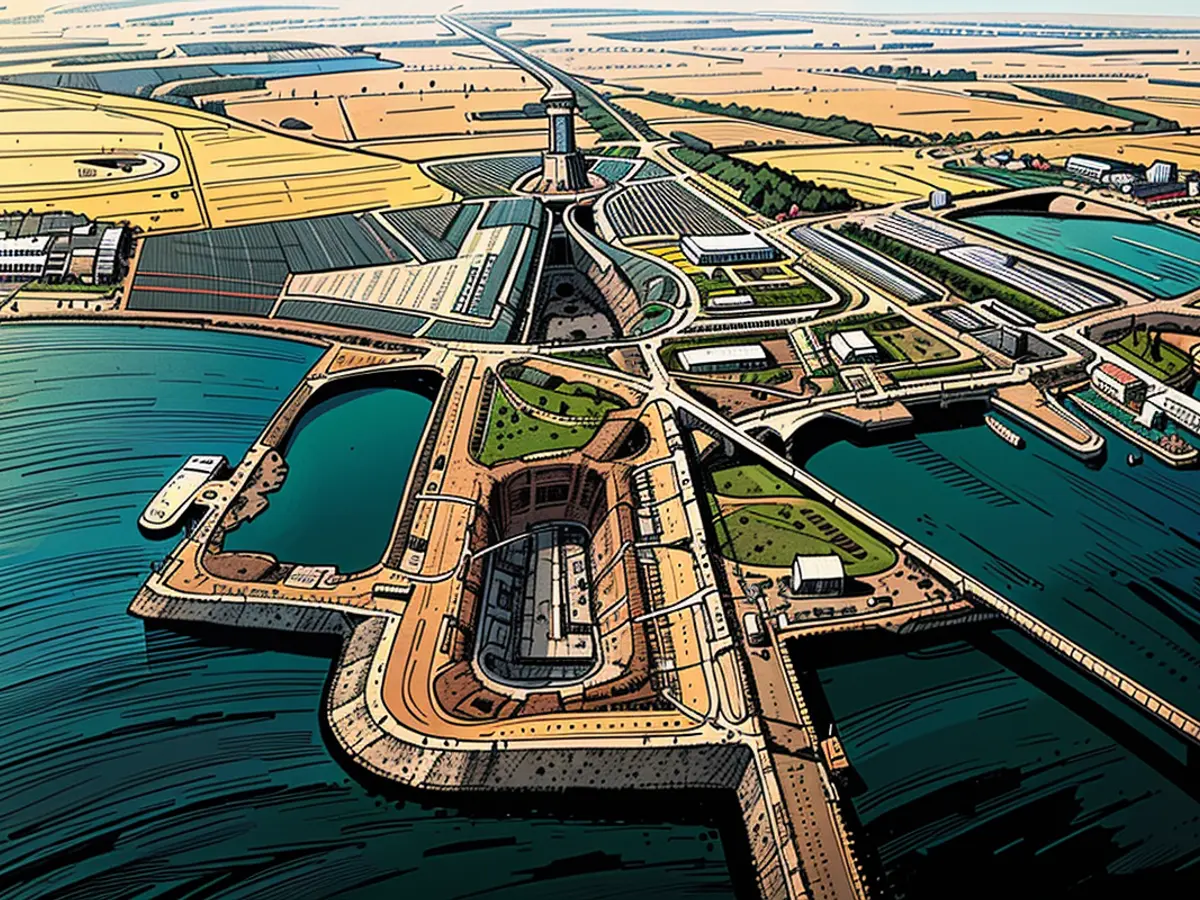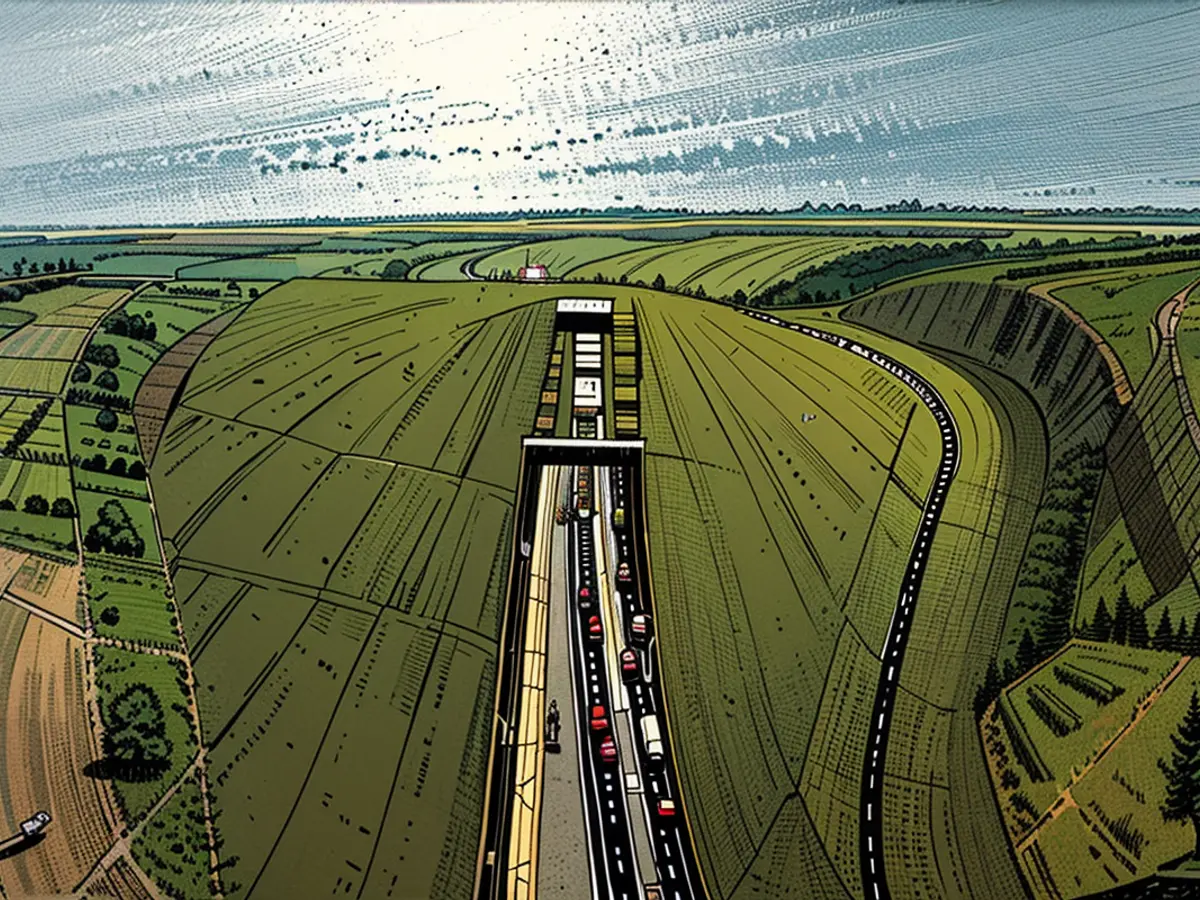The longest road and railway tunnel worldwide is under construction beneath the Baltic Sea.
The initial segment of the Fehmarnbelt Tunnel was unveiled on June 17 by King Frederik X of Denmark, marking a momentous occasion four years after construction commenced in 2020, following over a decade of planning.
On the Danish side, to the east of Rødbyhavn, a factory that will manufacture the 89 enormous concrete sections needed for the tunnel was completed last year. Femern A/S, the state-owned Danish company spearheading the project, claims it's the largest and most sophisticated production facility of its kind.
The tunnel, stretching 18 kilometers (11.1 miles), is one of Europe's largest infrastructure undertakings, with a construction budget surpassing 7 billion euros ($7.1 billion). In comparison, the 50-kilometer (31-mile) Channel Tunnel connecting England and France, finished in 1993, cost the equivalent of £12 billion ($13.6 billion) in today's money. Although longer than the Fehmarnbelt Tunnel, the Channel Tunnel was built using a boring machine instead of immersing pre-built tunnel sections.
It will be built across the Fehmarn Belt, a strait between the German island of Fehmarn and the Danish island of Lolland, and is intended as an alternative to the current ferry service from Rødby and Puttgarden, which transports millions of passengers annually. Where the crossing now takes 45 minutes by ferry, it will take just seven minutes by train and 10 minutes by car.
Streamlined travel
The tunnel, with its official name being Fehmarnbelt Fixed Link, will also be the longest combined road and rail tunnel globally. It will consist of two double-lane highways, each with a service passageway in between, and two electrified rail tracks.
"If you were to take a train trip from Copenhagen to Hamburg today, it would take you around four and a half hours," stated Jens Ole Kaslund, technical director at Femern A/S, in 2022. "When the tunnel is completed, the same journey will take just two and a half hours."
"Today a lot of people fly between the two cities, but in the future, it will be better to just take the train," he adds. The same trip by car will be around an hour faster than today, taking into account the time saved by avoiding ferry waits.
Besides benefiting passenger trains and cars, the tunnel is expected to positively impact freight trucks and trains, according to Kaslund. This is because it provides a land route between Sweden and Central Europe that will be 160 kilometers shorter than the current route.
Currently, traffic between the Scandinavian peninsula and Germany via Denmark can either take the ferry across the Fehmarn Belt or a longer route via bridges between the islands of Zealand, Funen, and the Jutland peninsula.
Work in progress
The project traces back to 2008 when Germany and Denmark signed an agreement to construct the tunnel. It then took over a decade for the necessary legislation to be passed by both countries and for geotechnical and environmental impact studies to be conducted.
While the process went smoothly on the Danish side, in Germany, a number of organizations – including ferry companies, environmental groups, and local municipalities – opposed the project's approval over claims of unfair competition or environmental and noise concerns.
In November 2020, a federal court in Germany upheld the project's approval, setting certain conditions for monitoring the environment during construction, mainly addressing issues like noise and sediment spill.
Several other phases of the project are underway, including the excavation of the actual trench that will house the tunnel. Each section will measure approximately half the length of the world's largest container ship, span 42 meters wide, and stand 9 meters tall, weighing a remarkable 73,000 metric tons each, equivalent to over 13,000 elephants.
The factory boasts three halls and six production lines. The sections will be placed just beneath the seabed, at a depth of roughly 40 meters below sea level at the deepest point, and moved into place by barges and cranes. Positioning the sections will take approximately three years.
A broader impact
Up to 2,500 people will work directly on the construction project. Michael Svane of the Confederation of Danish Industry, one of Denmark's largest business organizations, stated in 2022 that he believes the tunnel will aid businesses beyond Denmark itself.
"The Fehmarnbelt tunnel will create a strategic corridor between Scandinavia and Central Europe. The enhanced railway connection means more freight shifting from road to rail, bolstering an environmentally friendly mode of transportation. We consider cross-border connections a tool for generating growth and jobs not only locally but also nationally," he said.
While some environmental groups have expressed apprehensions about the tunnel's impact on porpoises in the Fehmarn Belt, Michael Løvendal Kruse of the Danish Society for Nature Conservation believes the project will have environmental advantages.
"As part of the Fehmarnbelt Tunnel, new natural areas and stone reefs on the Danish and German sides will be created. Nature needs space, and there will be more space for nature as a result," he says.
"But the biggest advantage will be the benefit for the climate. Faster passage of the Belt will make trains a strong rival for air traffic, and cargo on electric trains is by far the best solution for the environment."

Read also:
After completion, the Fehmarnbelt Fixed Link will significantly reduce travel time between Copenhagen and Hamburg, taking just two and a half hours by train compared to four and a half hours currently. This streamlined travel is also expected to attract more people to use trains instead of flights, resulting in a more environmentally friendly mode of transportation.
Furthermore, the tunnel will provide a land route between Sweden and Central Europe that is 160 kilometers shorter than the current route, benefiting both passenger cars and freight trucks. This improved transportation infrastructure will not only generate growth and jobs locally but also nationally, as stated by Michael Svane of the Confederation of Danish Industry.
- Fear of escalation in the Middle East: US Secretary of State Blinken travels to the region again
- Government circles: US Secretary of State Blinken to travel to Middle East again
- Bridging days 2024: How you can double your vacation this year
- Germany has wanderlust: how tour operators and airlines are looking ahead to the next travel year








